I had some requests for more ingredient breakdown posts similar to my previous one on Soylent. I thought I'd break down the processing, inner workings, marketing gimmicks and ingredients of an iconic food-like product, Kraft Macaroni and Cheese.
This is based on the new and improved 'cleaner' macaroni and cheese, the US ingredient list is shown. This all applies to non-star wars shapes too :)
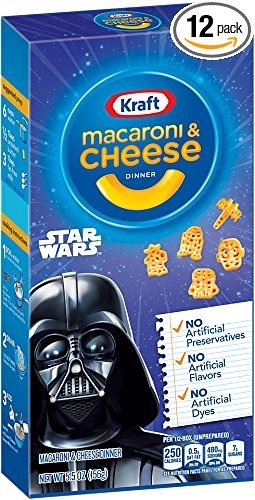
"Clean Ingredients"
Recently Kraft removed artificial colours and flavours from their macaroni and cheese product. Like most larger food corporations, Kraft is slowly getting the message that consumers want 'cleaner ingredients' in their packaged food products. This mostly means we still want to have super convenient, cheap, packaged foods with ingredients that make us feel less guilty about eating them or feeding them to our kids. 'Cleaning up' ingredients in a product is a great marketing tool because consumers can feel like they have improved their diet just by eating the same thing they always have. The trouble is, most loyal customers react negatively to these types of changes if there is ANY effect on sensory properties like taste or texture.
Let's see WTF this stuff is made of
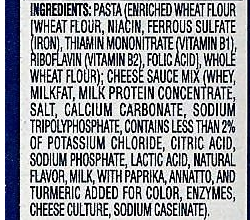
Pasta (enriched with a whole bunch of vitamins added) - Most wheat flour based products are required to be enriched with vitamins and minerals in many jurisdictions like the US, where wheat is a staple. Nothing weird happening here.
Macaroni and "Cheese"?
The usual method for production of cheese powders like this is spray drying. This means spraying a liquid into a low humidity, heated chamber and letting it dry while it falls like snow-flakes. One problem, cheese is not a liquid. If you melt cheese into a liquid, the fats start to separate. So the simple solution is to make an emulsified cheese product, something like Cheez Whiz and spray dry that into a powder that can be re-constituted by the customer.
Melted Cheese with no Emulsifying Salts
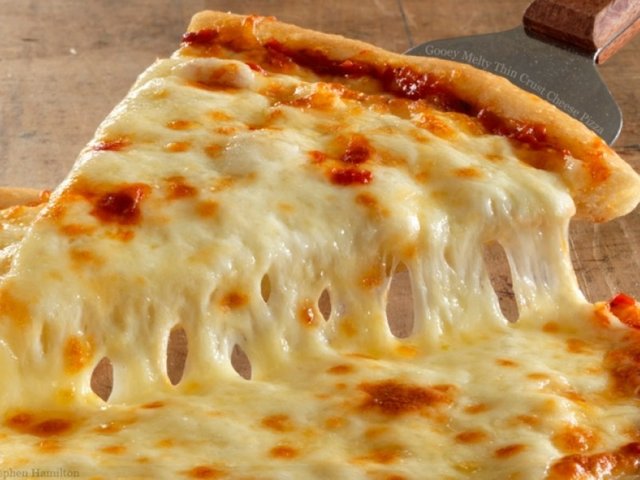
Emulsifying salts make melted cheese look more like this (not my photos)
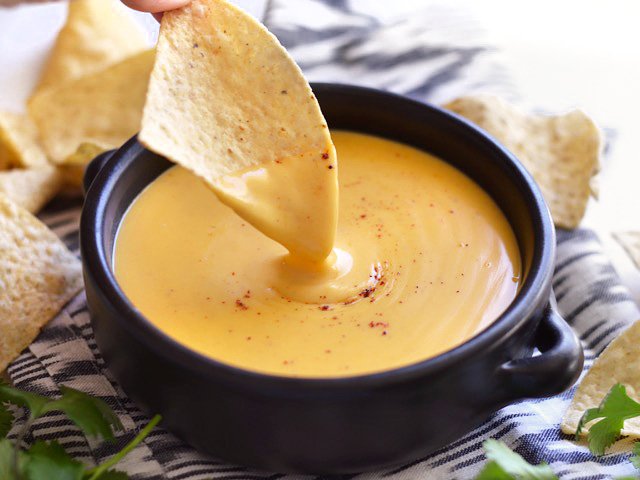
Spray Drying
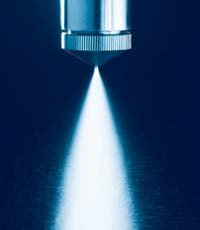
The below ingredients would be mixed into a sauce then spray dried:
Whey - A dairy milk protein and by-product of the cheese industry. One of the two major milk protein families (whey and casein). Has a neutral, milky taste and dries quite well. Nothing scary about whey, but it is a bit funny seeing whey as the first ingredient in a cheese sauce since whey is akin to bizaro-cheese. What is not cheese in cheese making is whey.
Milk Fat - This isn't butter because butter contains about 20% water, this refers to 100% pure fat from milk.
Milk Protein Concentrate - Protein powder with the same proteins as whole milk (Casein and Whey), in the same ratio as milk.
Salt - Cheap and Cheerful. Consumers love the taste and manufacturers love the price.
Calcium Carbonate - Cheese making enzyme (rennet) produces a stronger set with more calcium present. This is added to cheeses sometimes to aide in the set.
Sodium Tripolyphosphate, Sodium Phosphate - An 'emulsifying salt' that emulsifies the fats, protein and water in melted cheese. Letting it flow like a thick river of lava. This is needed to allow the cheese sauce (think hot Cheez Whiz) to flow through the spray dryer. Emulsifying salts are key in the texture of Cheez Whiz and other processed cheeses.
Potassium Chloride - Can contribute a salty taste without contributing sodium. It is usually used in small quantities as totally replacing sodium with KCl tastes horrible.
Citric acid, Lactic acid - Add acid/sour notes. Real cheese is sour because lactic acid bacteria have converted lactose in the milk to lactic acid in the cheese. This sauce would be lacking in acidity as non-fermented ingredients like milk protein concentrate are added, so these acids make up the lack in acidity.
Natural Flavour - Kraft has removed artificial flavours and added Natural. The difference being that artificial are usually derived from petroleum sourced chemicals while natural are plant or animal sourced. The plant or animal is not necessarily related to the flavour it emulates as flavourists can get pretty creative. These preparations are usually made by super secretive third party "flavour houses" so Kraft may not even know the exact ingredients.
Milk - This is mysteriously close to the bottom of the list for a product that is called "Mac and Cheese". it is listed later than <2% potassium chloride.
Paprika - Spice or spice extract added for colour.
Annatto - A plant derived colour, the traditional colouring agent of cheddar cheese.
Turmeric - Added for colour. Very trendy!
Enzymes - Rennet is the traditional cheese making enzyme, sourced from calves. Many cheese makers use microbial produced rennet since it is easy to obtain and vegetarian friendly. The word enzymes may leave it open to either but it is likely microbial sourced. Lipase (breaks down fats) enzyme is also likely used to add to the 'stinky cheese' flavour profile. Lipase takes larger fatty acids and splits them up, emulating the act of aging cheese,
Cheese Culture - Lactic acid bacteria used to sour milk in cheese making.
Sodium Caseinate - More milk protein (Casein).
Summary
This product is cleaner than it used to be, but still calls itself 'Macaroni and Cheese'. It seems the cheese sauce mix contains some cheese, but is mostly a rebuilding of what Kraft thinks cheese should be. Cheese has protein, so Kraft added milk proteins protein, cheese has fat so Kraft added Milk Fat, Cheese is sour so Kraft added acids. I'm not personally opposed to eating any of these ingredients once in a while, so I don't see any health flags in this product. I'll always say homemade is better, I think anyone could make a quick roux, heat milk and melt cheese into a pot in the 10 minutes it takes pasta to boil.
If you enjoyed this type of format, please let me know what else I can look into for you!
People fall for so many traps. Like no sugar added doesn't mean low sugar. Or all natural cane sugar doesn't mean it is way better than regular sugar in drinks (correct me if I am wrong)
I would love if you could break down the top 3 energy drinks side by side. The "diet versions." Red Bull, Monster, and Rockstar.
I know none of these are necessarily healthy, but I also know that many people will reach for an energy drink when they need a pick me up after a long sleepless night.
Maybe you could also do XS energy (from Amway - I think it actually is quite healthy, but would love your breakdown).
Downvoting a post can decrease pending rewards and make it less visible. Common reasons:
Submit
Hi Again, I saw your message on the other post but I just wasn't familiar enough with the XS product to have much to say about it, but ill look at the others :) I don't see anything wrong with POM juice, it is a just a premium product and thus expensive from what I can tell.
Downvoting a post can decrease pending rewards and make it less visible. Common reasons:
Submit
Ok I can get you the nutrition facts here if you wish to look a little at them.
XS Energy Nutrition
Downvoting a post can decrease pending rewards and make it less visible. Common reasons:
Submit
uck - processed foods - when broken down like this makes me even more resolved to cook my own - Mac and REAL Cheese is so simple to make! - great breakdown though and enjoyed reading
Downvoting a post can decrease pending rewards and make it less visible. Common reasons:
Submit
This post has been linked to from another place on Steem.
Learn more about linkback bot v0.3
Upvote if you want the bot to continue posting linkbacks for your posts. Flag if otherwise. Built by @ontofractal
Downvoting a post can decrease pending rewards and make it less visible. Common reasons:
Submit
whey is a byproduct of the cheesemaking process. there is dairy products in this but no actual cheese
Downvoting a post can decrease pending rewards and make it less visible. Common reasons:
Submit